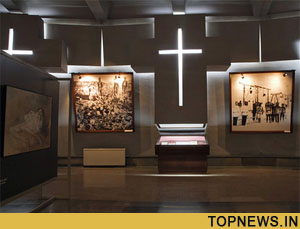Armenian genocide museum to nestle close to White House
 Washington - The US Armenian community plans to open the Armenian Genocide Museum of America just a block and a half from the White House in less than two years.
Washington - The US Armenian community plans to open the Armenian Genocide Museum of America just a block and a half from the White House in less than two years.
In the pecking order of specially themed museums in Washington, the building will be far closer to the seat of US executive power than those dedicated to the Jewish Holocaust, African Art or the American Indian.
Whether that will bring Armenian-Americans any closer to presidential recognition of what they regard as genocide remains to be seen.
The museum will document the killing of 1.5 million Armenians at the hands of Ottoman Turks from 1915-23.
The community is hoping that US President Barack Obama will follow through on Friday - the 94th anniversary of the start of the killings - on his pledge during last year's election campaign to affirm the killings as genocide.
Among Obama's predecessors, only the late president Ronald Reagan in 1981 ever called the killings genocide while in office.
Turkey refuses to acknowledge the mass killings as a genocide, places the death toll much lower - at about 600,000 - and attributes the deaths to consequences of World War I.
Unlike the Holocaust Memorial Museum, which was built with federal as well as private money as part of the quasi-governmental Smithsonian complex, the Armenian genocide museum is being built with only private donations.
In fact, the Armenian genocide gets only scant mention in the US Holocaust Memorial Museum, partly because of opposition from Turkey. Turkey used its leverage as an important US military ally to nix inclusion, according to Edward T Linenthal, who wrote a book about the museum's evolution, Preserving Memory.
The planners of the Armenian genocide museum, who began working in 1996, will be free of such pressures as a private enterprise.
Museum planners are coordinating with the Tsitsernakaberd Memorial Complex in Yerevan, Armenia. The Washington project will be an "important educational" tool of testimony to the "facts of the Armenian genocide," said Bryan Ardouny, executive director of the Armenian Assembly of America.
The museum will occupy the historic, long-vacant National Bank of Washington building, constructed in 1925 at the corner of 14th and G Streets. (dpa)